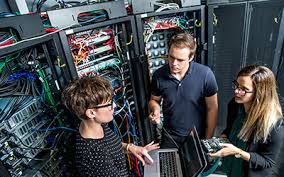Bandung, Telkom University - CCNA/CCNP candidates will be delved into by Cisco for troubleshooting questions. You should analyze your configuration to see what the problem is (if there is a problem), determine what the various debug outputs mean, and demonstrate your ability to fix errors on more than just routers and switches.
CCNA and CCNP are involved in a lot of troubleshooting during their careers, so this is exactly what it should be. You can't learn troubleshooting from a book. Experience with routers and switches is required. The only real way to learn how to troubleshoot is to hone this skill while working on live equipment. Of course, your company and customers are highly skeptical of developing this skill in a live network. So what can you do?
Assemble your Cisco home lab. Getting to work with real Cisco equipment is a big win. First, before exam day, you'll be amazed at how well you retain information that becomes your second nature. But more importantly, you'll learn invaluable troubleshooting skills for both your lab and your career.
Don't get me wrong, I'm not saying it's not important to know the theory behind how routers and switches work. On the contrary, if you don't know network theory, you can't become a CCNA or CCNP. But the ability to apply that knowledge is very important. This can only be achieved by working with real Cisco routers and switches. Ask yourself these simple questions about these “router simulators” out there today.
"How many router simulators are there when you walk into the server room?"
I often tell my students that they learn best when they fail. Many students later told me I was right. Misconfigured Frame Relay, ISDN, or any other of his CCNA/CCNP technology and had to fix it myself, not only was I given the opportunity to apply my knowledge, I applied it I was given the opportunity. They are confident they can do it.



